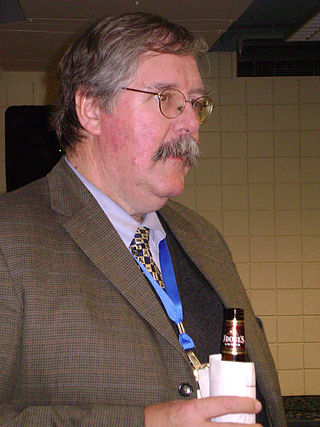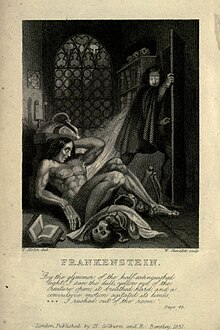
A markuplanguage is a text-encoding system which specifies the structure and formatting of a document and potentially the relationship between its parts. Markup can control the display of a document or enrich its content to facilitate automated processing.

In computing, plain text is a loose term for data that represent only characters of readable material but not its graphical representation nor other objects. It may also include a limited number of "whitespace" characters that affect simple arrangement of text, such as spaces, line breaks, or tabulation characters. Plain text is different from formatted text, where style information is included; from structured text, where structural parts of the document such as paragraphs, sections, and the like are identified; and from binary files in which some portions must be interpreted as binary objects.

The Standard Generalized Markup Language is a standard for defining generalized markup languages for documents. ISO 8879 Annex A.1 states that generalized markup is "based on two postulates":

The Semantic Web, sometimes known as Web 3.0, is an extension of the World Wide Web through standards set by the World Wide Web Consortium (W3C). The goal of the Semantic Web is to make Internet data machine-readable.

Extensible Markup Language (XML) is a markup language and file format for storing, transmitting, and reconstructing arbitrary data. It defines a set of rules for encoding documents in a format that is both human-readable and machine-readable. The World Wide Web Consortium's XML 1.0 Specification of 1998 and several other related specifications—all of them free open standards—define XML.
Mathematical Markup Language (MathML) is a mathematical markup language, an application of XML for describing mathematical notations and capturing both its structure and content, and is one of a number of mathematical markup languages. Its aim is to natively integrate mathematical formulae into World Wide Web pages and other documents. It is part of HTML5 and standardised by ISO/IEC since 2015.

The Geography Markup Language (GML) is the XML grammar defined by the Open Geospatial Consortium (OGC) to express geographical features. GML serves as a modeling language for geographic systems as well as an open interchange format for geographic transactions on the Internet. Key to GML's utility is its ability to integrate all forms of geographic information, including not only conventional "vector" or discrete objects, but coverages and sensor data.

The Text Encoding Initiative (TEI) is a text-centric community of practice in the academic field of digital humanities, operating continuously since the 1980s. The community currently runs a mailing list, meetings and conference series, and maintains the TEI technical standard, a journal, a wiki, a GitHub repository and a toolchain.
RDFa or Resource Description Framework in Attributes is a W3C Recommendation that adds a set of attribute-level extensions to HTML, XHTML and various XML-based document types for embedding rich metadata within Web documents. The Resource Description Framework (RDF) data-model mapping enables its use for embedding RDF subject-predicate-object expressions within XHTML documents. It also enables the extraction of RDF model triples by compliant user agents.
In computing, Terse RDF Triple Language (Turtle) is a syntax and file format for expressing data in the Resource Description Framework (RDF) data model. Turtle syntax is similar to that of SPARQL, an RDF query language. It is a common data format for storing RDF data, along with N-Triples, JSON-LD and RDF/XML.

C. Michael Sperberg-McQueen is an American markup language specialist. He was co-editor of the Extensible Markup Language (XML) 1.0 spec (1998), and chair of the XML Schema working group.
The Semantic Web Stack, also known as Semantic Web Cake or Semantic Web Layer Cake, illustrates the architecture of the Semantic Web.
MECS is the Multi-Element Code System, a markup system developed by the Wittgenstein Archives at the University of Bergen. It is very similar to SGML and XML except that it allows elements to overlap.
The Music Encoding Initiative (MEI) is an open-source effort to create a system for representation of musical documents in a machine-readable structure. MEI closely mirrors work done by text scholars in the Text Encoding Initiative (TEI) and while the two encoding initiatives are not formally related, they share many common characteristics and development practices. The term "MEI", like "TEI", describes the governing organization and the markup language. The MEI community solicits input and development directions from specialists in various music research communities, including technologists, librarians, historians, and theorists in a common effort to discuss and define best practices for representing a broad range of musical documents and structures. The results of these discussions are then formalized into the MEI schema, a core set of rules for recording physical and intellectual characteristics of music notation documents. This schema is expressed in an XML schema Language, with RelaxNG being the preferred format. The MEI schema is developed using the One-Document-Does-it-all (ODD) format, a literate programming XML format developed by the Text Encoding Initiative.
XHTML+RDFa is an extended version of the XHTML markup language for supporting RDF through a collection of attributes and processing rules in the form of well-formed XML documents. XHTML+RDFa is one of the techniques used to develop Semantic Web content by embedding rich semantic markup. Version 1.1 of the language is a superset of XHTML 1.1, integrating the attributes according to RDFa Core 1.1. In other words, it is an RDFa support through XHTML Modularization.
Knowledge extraction is the creation of knowledge from structured and unstructured sources. The resulting knowledge needs to be in a machine-readable and machine-interpretable format and must represent knowledge in a manner that facilitates inferencing. Although it is methodically similar to information extraction (NLP) and ETL, the main criterion is that the extraction result goes beyond the creation of structured information or the transformation into a relational schema. It requires either the reuse of existing formal knowledge or the generation of a schema based on the source data.
In natural language processing, linguistics, and neighboring fields, Linguistic Linked Open Data (LLOD) describes a method and an interdisciplinary community concerned with creating, sharing, and (re-)using language resources in accordance with Linked Data principles. The Linguistic Linked Open Data Cloud was conceived and is being maintained by the Open Linguistics Working Group (OWLG) of the Open Knowledge Foundation, but has been a point of focal activity for several W3C community groups, research projects, and infrastructure efforts since then.
Drama annotation is the process of annotating the metadata of a drama. Given a drama expressed in some medium, the process of metadata annotation identifies what are the elements that characterize the drama and annotates such elements in some metadata format. For example, in the sentence "Laertes and Polonius warn Ophelia to stay away from Hamlet." from the text Hamlet, the word "Laertes", which refers to a drama element, namely a character, will be annotated as "Char", taken from some set of metadata. This article addresses the drama annotation projects, with the sets of metadata and annotations proposed in the scientific literature, based markup languages and ontologies.








